#west cameroon
Explore tagged Tumblr posts
Text

Untitled (West Cameroon, 1983) - Jacques Toussele
223 notes
·
View notes
Text

#cameroon#west africa#french#black girl fashion#black girl fitspo#black girl moodboard#black girl tumblr#black girls of tumblr#blackgirlbeauty#blackgirlmagic#fashion aesthetic#soft black women#black beauty
533 notes
·
View notes
Text

#ghana#lgbtq#lgbtqia#lgbtq community#lesbian#lgbt pride#nonbinary#sapphic#nonbinary lesbian#queer#gay girls#ghanaian#west africa#ghana news#nigeria#africa#cameroon#african american#tanzania#asia#cambodia#ethiopia#namibia#boogie#ivory coast#mali#black dyke#black lesbian#poc lesbian
364 notes
·
View notes
Text

Every human deserves to live in peace, every human deserves to be treated as HUMANS. We’re all affected whether it’s directly or indirectly we’re all affected! Don't stop advocating for the ‘voiceless’!
#free palestine#free congo#free sudan#free west papua#free tigray#free Burma#free myanmar#free uyghurs#free syria#free kashmir#free Cameroon#free armenia#free kurdistan#free lebanon
347 notes
·
View notes
Text
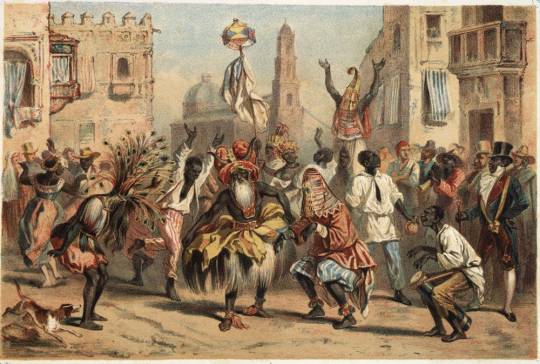
Long before it arose in New York City and became an influential style of music around the world, salsa music has its seeds in African rhythms and traditions that came to the Caribbean through the slave trade. Centuries of enslavement caused many cultural changes in Cuba, including the music that led to salsa.
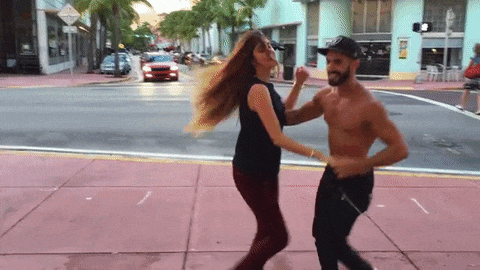
Some people know Bobby Day’s 1958 “Rockin’ Robin” or Michael Jackson’s remake but the origin of the song goes back to the days of slavery.
The majority of the Africans that were enslaved and brought to the Americas were of West African descent where the drum was used as a form of communication. In the Americas, enslaved Africans used the drum in the same way — communicating with the enslaved on distant plantations and ultimately planning uprising.
The enslavers caught wind of this and enacted a ban.
It is absolutely necessary to the safety of this Province, that all due care be taken to restrain Negroes from using or keeping of drums, which may call together or give sign or notice to one another of their wicked designs and purposes. — Slave Code of South Carolina, Article 36
That ban went down in 1740 and soon spread throughout Colonial America.
But the beat is in the heart of the African.
We soon found other ways to imitate the sound of the drum; stomping, playing spoons, washboards, or anything other household item. We also “slapped Juba” or played “hambone” where the body became an instrument where the player slaps their thighs and chest for the drum beat. (How did young boys in 1980s Park Hill, Denver know “Hambone?”)
Although we kept the beat, we lost the tradition, a cultural marker snatched away from us.
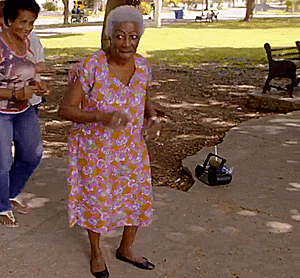
While the American enslaver worked feverishly to destroy any vestige of African culture, the Spanish enslaver of Cuba felt that it was in his best interest to allow the enslaved African to maintain his culture. In support of that, the Spanish allowed the Africans to organize Cabildos (or social groups) based on their nation of origin. Thus you had the Abakua (or Ekpe) from the nations known as Nigeria and Cameroon, the Madinga (or Malinke) from Sierre Leone, etc.
Our focus is primarily on the Lucumi, the Cabildo founded for the Yoruba of Benin and Nigeria. This lineage would be the cornerstone and origin point for what is now called “Salsa.” And what is this “Salsa?”
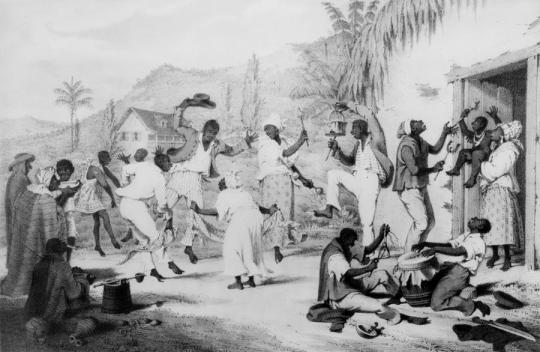
When we spoke of the drum being forbidden among the enslaved Africans in America, we forgot to mention that there was one place that didn’t enact that ban. That place was the port city of New Orleans, Louisiana — some even call New Orleans the Northernmost Caribbean city.
Similar in the way that the Spanish allowed for Cabildos in Cuba, the Louisiana enslavers permitted Sundays off and were okay with the dance and celebration so long as the enslaved African did so outside of the city limits in a place called Place des Negres (eventually known as Congo Square).
After the Civil War, Africans in America were able to get a hold of surplus brass instruments and shortly thereafter began composing music based on the popular music in the Caribbean at the time, the Cuban Habanero. Many say that this is one of the foundations of jazz music itself and the basis of the habanero, the tressilo, can be heard in second lines. Self-proclaimed jazz inventor, Jelly Roll Morton had this to say:
Now take the habanero “La Paloma”, which I transformed in New Orleans style. You leave the left hand just the same. The difference comes in the right hand — in the syncopation, which gives it an entirely different color that really changes the color from red to blue. Now in one of my earliest tunes, “New Orleans Blues”, you can notice the Spanish tinge. In fact, if you can’t manage to put tinges of Spanish in your tunes, you will never be able to get the right seasoning, I call it, for jazz. Jelly Roll Morton
Because of those qualities, a young musical prodigy from Cuba, Mario Bauzá recognized the similarities between jazz and Cuban music straightaway. Bauzá fell in love with jazz having heard it on Cuban radio but it was his trip to Harlem, NYC in 1927 that convinced him that New York was where he wanted to be and jazz was the music that he wanted to play.
Bauzá returned to New York in 1930, immediately found work, eventually landing a gig in the Cab Calloway band. Here he brought on the legend in the making, Dizzy Gillespie, and the two became fast friends. Bauzá attempted to play his “native” music to many in the band but they dismissed it as “country” music. Gillespie, on the other hand, embraced it.
For the next eight years Bauzá played in predominately African jazz bands having seen discrimination from white Cubans. Yet he longed to start a group that incorporated the music from his home and his second love, jazz. He shot this idea to his childhood friend/brother-in-law and in 1939 at the Park Palace Ballroom the Machito Afro-Cubans would debut.
“I am Black, which means my roots are in Africa. Why should I be ashamed of that?” Bauzá said in reference to the name.
Bauzá replaced the drum kit, which at that time had only been around for 20 years, with the hard to find congas, timbales, and toms. “The timbales play the bell pattern, the congas play the supportive drum part, and the bongos improvise, simulating a lead drum”. In the 40s these drums could only be found at Simon Jou’s bakery, La Moderna, locally known in East Harlem simply as Simon’s.
Next, the Afro-Cubans needed a home and they would find that not in Harlem nor the Bronx, but instead in Midtown Manhattan, a club called the Palladium.

Salsa is a set of Afro-Caribbean rhythms fused with jazz and other styles. The truth is that its origins have always been much debated, although as a general rule it is mentioned that it comes from a fusion that came from Africa in the Caribbean when they heard European music and wanted to mix it with their drums
These origins focus especially on mambo, danzó, cha cha chá, guaracha and son montuno, later enriched with instruments such as saxophone, trumpet or trombone.
It was the Cuban exiles and those from Puerto Rico who popularized salsa in New York back in the 1950s. But it wasn't until the last third of this century that salsa dancing began to take off all over the world.
Cuba played a leading role in the origin of salsa. Already in the 1930s, melodies and rhythms from Africa were playing on the Caribbean island. Among them was the danzón, a musical piece acquired by the French who had fled Haiti.
History tells us that it was these first rhythms that were then mixed with rumbas such as guagancó and sonero to begin to create their own Afro-Cuban rhythms, including Afro-Cuban jazz, mambo, guaracha, Cuban son and montuno.
The exquisite melody of these new rhythms soon set in other Latin American countries. Puerto Rico and Colombia were the first to welcome these new sounds from the Cuban country.
However, it was not until their appearance in the United States, and more specifically in the Bronx neighborhood of New York, when these rhythms acquired a greater impact. It was the moment in which new musical instruments were added that today form an indissoluble part of salsa.
The great Cuban musicians who moved to New York along with the wave of these new rhythms created the famous tumbadoras, congas or son montuno, and were responsible for introducing trombones and guaracha.
The Origin of the Salsa Dance Steps
Once salsa was defined as a musical genre in the 1970s, the movements and steps of its dance were collected through a fusion of the African with the European.
These steps and movements of salsa fundamentally reflect the influence of the dances that the Africans brought to the Caribbean and the European dances that have been danced in Cuba since the 1930s.
So much so that the basic steps of salsa are precisely the same steps as the Cuban son, just as it also includes steps that can be seen in rumba, danzón and mambo.
The origin of these variants is in the regions where this style comes from, which are the ones that developed each dance, always under the same umbrella of the term salsa.
It is not surprising, then, that salsa is defined as the result of a series of social conditions and the evolution of a series of rhythms and melodies from Cuba, which were developed and achieved repercussion in the United States.
There are those who assure against this mixture that salsa is neither a rhythm nor a style, but rather a term that serves to represent all the music of Afro-Cuban origin that emerged in the first decades of the twentieth century.
In short, the origin of salsa has always been, and will continue to be, much discussed. American musician Tito Puente was right when he said, "Salsa doesn't exist. What they now call salsa is what I have played for many years, and this is mambo, guaracha, cha cha chá and guagancó".
#salsa#cuba#congo#nigeria#african#afrakan#kemetic dreams#brownskin#africans#afrakans#brown skin#african culture#afrakan spirituality#nigerian#nigerians#ghana#niger#cameroon#senegal#west africa#afro cuban#american#african american#african american history#american history#dance#african dance#congo dance#ekik#yoruba
22 notes
·
View notes
Text
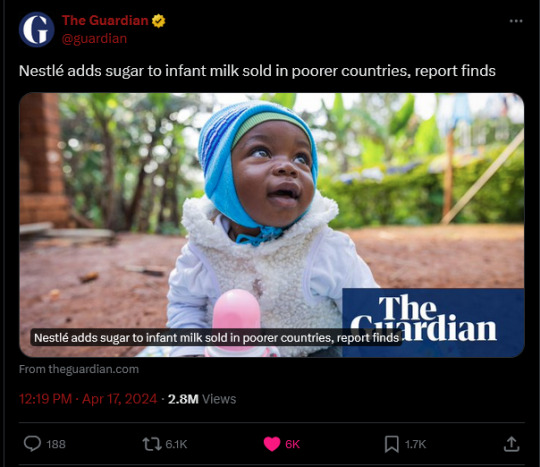
#corporations#leftism#anti capitalism#socialism#communism#anarchy#fuck corporations#corporation blog#capitalism#eat the rich#late stage capitalism#poverty#economics#african culture#south africa#africa#tanzania#west africa#zambia#uganda#nigeria#ghana#senegal#cameroon#lagos
10 notes
·
View notes
Text
Beignets

These beautifully golden, light and fluffy Beignets are part of a favourite dish Dad has cooked for us since we were little. And I distinctly remember Jules and I would fight for the last one! More often than not she'd win, for I'd be inclined to share and halve it, and she would just pick it up and gobble it up. Today, Dad and I made these together, and I'm really happy with the result (and since Jules has returned home, I ate the last one!)
Ingredients (makes about 3 dozens):
1 tablespoon active dry yeast
1/4 cup lukewarm water
500 grams plain flour
1/2 cup caster sugar
1 teaspoon salt
1 tablespoon Vanilla Sugar
2 tablespoons sunflower oil
1 1/4 cup water
1 litre/4 cups sunflower or vegetable oil
In a small bowl, combine yeast and water. Give a stir, cover with cling film, and let sit, 10 minutes, until foamy.
In the bowl of an electric stand mixer, with the hook attachment fitted, combine flour, sugar, salt and Vanilla Sugar. Beat on medium speed until combined.
Add sunflower oil and half of the water in the middle of the dry ingredients, and start beating again, on medium speed, until a soft dough starts coming together.
Add yeast mixture and, gradually increasing speed to high, gradually pour in remaining water (you may not need all of it, or may need more), until you have a smooth and slack batter, a bit thinner than a brio dough. Scrape the sides with a spatula to make sure it's all well-combined.
Cover bowl with cling film, and place in a warm, draught-free place. Allow dough to rise, at least a couple of hours, until doubled in size.
Heat sunflower oil in a large pot.
Pour water in a small bowl.
Wet your (clean) hand in the water, and scoop about a tablespoonful of the risen batter, on the side of the bowl with it.
Carefully drop it in the hot oil. If it rises up quickly, drop a few more tablespoonfuls of the batter, so you have about 6 to 8, depending on the size of your pot (they need a bit of room to expand).
Flip them on each side with a wooden spoon, until golden brown all over. If they colour too quickly, reduce heat to medium. Using a slotted spoon, transfer to a shallow plate lined with paper towels and repeat until all Beignets are fried, keeping those which are ready warm.
Eat Beignets hot, as they are as a snack, or sprinkled with sugar or Cinnamon Sugar. Or enjoy them as they're meant to, as a side to a fragrant and spicy Bean Sauce!
#Recipe#Food#Beignets#Beignet recipe#Fried Dough#Flour#Plain Flour#Sugar#Caster Sugar#Vanilla Sugar#Salt#Water#Yeast#Oil#Sunflower Oil#Baking#Baking recipe#Cameroonian recipe#Cameroonian Cuisine#West African Cuisine#West African recipe#Food Memories#Food and Travel#Cameroon#West Africa#Cameroonian and West African Kitchen
5 notes
·
View notes
Text
A Long Way From Douala (🇨🇲 Cameroon)



[image1: book cover: a young Black man wears a traditional fabric wrapped around him that matches the fabric hanging behind him. A soccer ball is tucked under his arm; image2: a map showing Cameroon, tucked under Nigeria and Chad; image3: a street in Douala, Cameroon, lined with cars, palms, and residential houses]
A Long Way From Douala
Author: Max Lobe
World challenge read for 🇨🇲 Cameroon
Review
Seventeen-year-old Jean and his childhood friend, the older Simon, go on a journey across Cameroon to track down Jean's runaway older brother Roger, who has set off on the track to migrate to Europe (not surprising, considering their mother's abuse of him).
This was a short, pretty lighthearted novel that ends rather abruptly. The author's goal seems to be to show off local quirks on a road trip across the country—buying grilled caterpillars at a bus stop, riding the world's deadliest road for accidents, the stark difference in culture between the Christian south and the Muslim north.
While the queerness is mostly limited to longing looks at Simon's body, and I found the narration somewhat stilted, there are plenty of amusing moments and interesting setting to make the book enjoyable.
★ ★ ★ 3 stars
Genres: #literary #contemporary #adventure
Other reps: #gay #christian
#book review#world reading challenge#cameroon#booklr#diverse books#literary#lgbtq#christian#gay#adventure#contemporary#africa#west africa
2 notes
·
View notes
Text
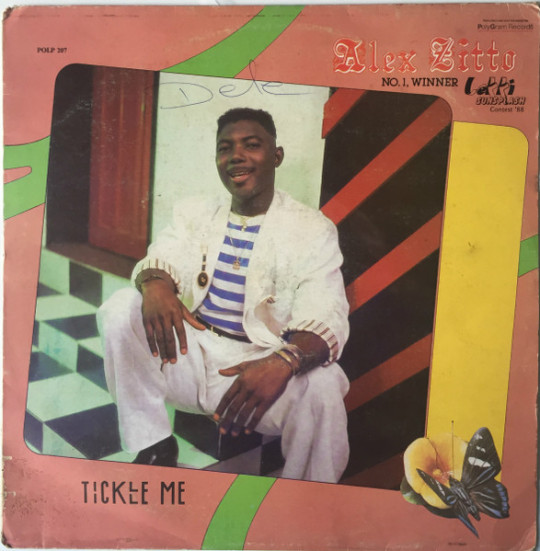
Alex Zitto - Tickle Me (1989) [FLAC]
- Contact me for digital exchange!
#Alex Zitto - Tickle Me (1989) [FLAC] Rare Afro Exchange#Funk#Disco#Reggae#Boogie#Highlife#Music#West Africa#South Africa#Nigeria#Ghana#Ivory Coast#Togo#Benin#Cameroon#Antilles
7 notes
·
View notes
Text
Population: 84,223
10 notes
·
View notes
Text
Brand New 2 Story Houston Airbnb!
Welcome to La Vie Est Belle at Mimi’s, the ornate and hidden gem of Houston! Come enjoy our brand-new and fully furnished two-story! We have free Netflix and quality WIFI. Our estate is in a peaceful neighborhood, just 2 minutes away from a variety of grocery stores, restaurants and shopping centers. Want to visit the city? No problem! Our home is close to Hwy 290 for a smooth trip to Downtown Houston (30 minutes) or The Galleria (20 minutes). 35 min from Bush Airport 40 min from Hobby Airport
https://www.airbnb.com/rooms/48899247?source_impression_id=p3_1710441563_Vx04McnLMznpeBMK












Check out our 2 Story Houston Airbnb and book! Share with Friends and Family!
https://www.airbnb.com/rooms/48899247?source_impression_id=p3_1710441563_Vx04McnLMznpeBMK
#airbnb#hotel#houston#houstontx#texas#black tumblr#black twitter#blackout#new york#nyc#atlanta#chicago#los angeles#california#orlando#florida#vacation#africa#africans#west africa#cameroon#cameroonian#nigeria#afrocentric#art#photography#memes#travel#tourist
3 notes
·
View notes
Text

Bamileke of the Cameroon
6 notes
·
View notes
Text
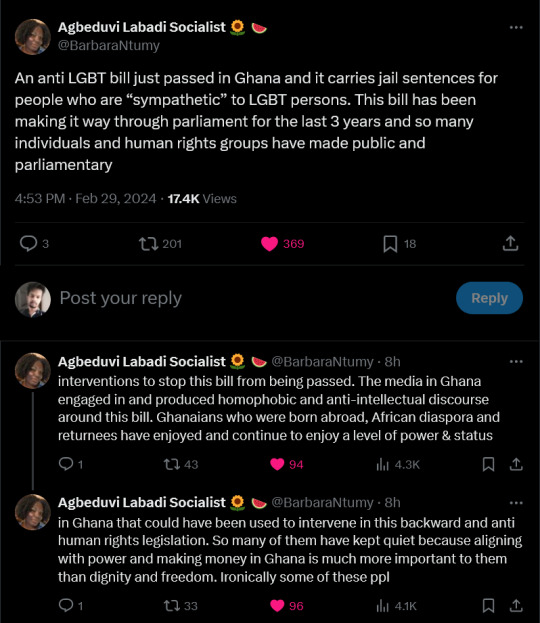
#ghana#lgbtq#lgbtq community#lgbt pride#lesbian#nonbinary#sapphic#nonbinary lesbian#ghanaian#ghana news#west africa#nigeria#afrique#africa#cameroon#black gay#gay girls#lgbtqia#queer#gay black#gaymen#black men#black boys#melanin men#gay marriage#gay love#gay art#gay bulge#gay men#gay couple
40 notes
·
View notes
Text

My wall of flags looks good so far, I'll continue to post. I have friends from almost all of these places, and I love them more than anything.
#flags#flags of the world#drawings#flag drawings#israel#Palestine#UAE#germany#Nigeria#Cameroon#Tanzania#west africa#balkans#western europe#EU#middle east#india#Pakistan
4 notes
·
View notes
Text
wishing richarlison and the brazil NT nothing but bad vibes during this match sorry to brazilians 🙏🏽
#africa FIRST....#but 🤭🤭🤭just saw one really beautiful man on that brazil team that almost changed my mind a lil lemme be honest 😔#cameroon do it for west africa PLEASE.
4 notes
·
View notes
Text
“but sasha you just spent like the past hour complaining about having to talk to other people in french why would you want to go back to europe” easy. i don’t speak german or italian or spanish. and the awkwardness of being an english speaker in austria or italy or wherever is far better than trying to speak subpar french to a french person
#sasha speaks#have you ever spoken to a french person. in french. it's one of the most intimidating experiences in the world. it's like bomb diffusal#joke. sort of. but it's really hard :( esp cause a lot of french people will just talk to YOU in english if your french is bad#once again i apologize deeply to maxime from cameroon for my horrible french today but he was very nice and patient about it#non-french francophones tend to be more patient and forgiving about the language and with learners in my experience...#although i know he was probably like. trained to talk to learners. and not just anybody would have that kind of helpful attitude#also i think west african french accents are easier to understand a lot of times than france french or quebecois accents SORRY#idk why but i do#also for the record when i travel somewhere even if i don't know the language i do TRY to learn at least a few common phrases and words#i do TRY to be polite and learn a bit. i don't want to be an ignorant self-centered american#(my gd i am embarrassed to be american when i travel)#and in most places people seem to be cool about that#i can actually get by a bit reading italian but spoken italian is pretty much useless to me#but german. sorry guys. hopeless
4 notes
·
View notes